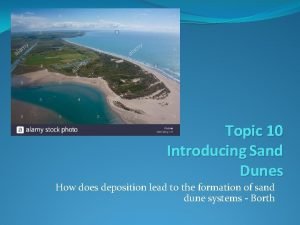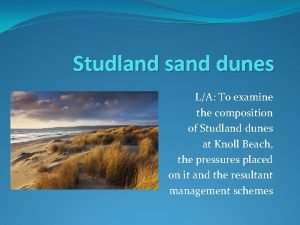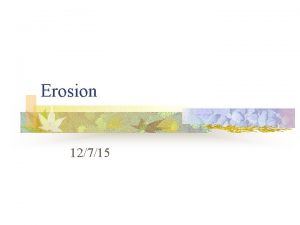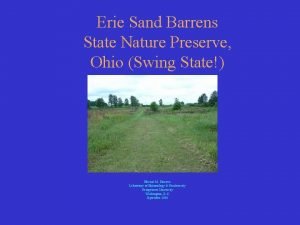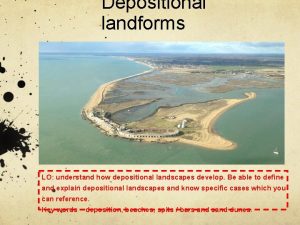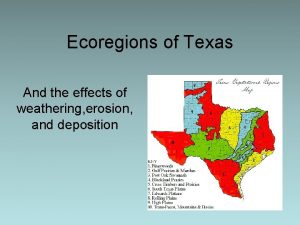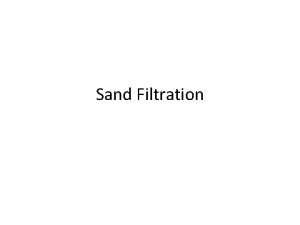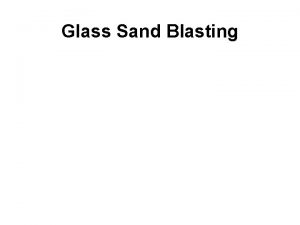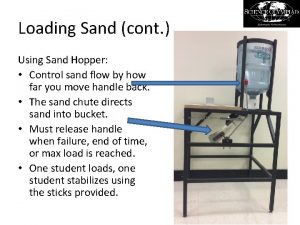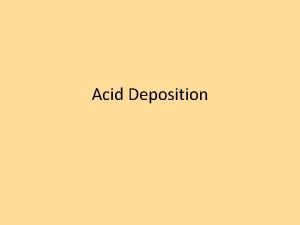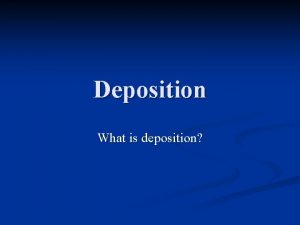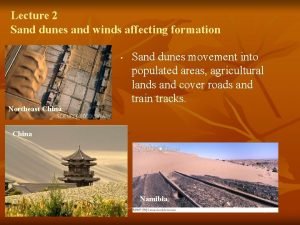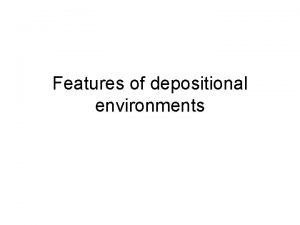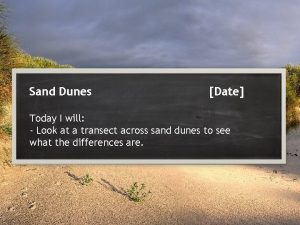Topic 10 Introducing Sand Dunes How does deposition












- Slides: 12

Topic 10 Introducing Sand Dunes How does deposition lead to the formation of sand dune systems - Borth

Stick the location map for Borth in your book. Conditions needed for dunes to form: � Large supply of sediment � Strong onshore winds � A large gap between high and low tide to allow the sand to dry out � A flat area for the sand to collect at the back of the beach Borth beach meets all of these requirements

Borth Dunes – How does an offshore bar develop into a dune complex? Write the following introduction in your book: �The town of Borth is located on the west coast of Wales in Cardigan Bay. At its northern end, an extensive dune system exists. Activities : Complete your map showing the location and structure of Borth Dunes Stage 1 - Colour your map Stage 2 Use page to complete the labels on your map. You will need to choose from those on the instruction sheet as the labels are not identical

Resources needed:

Labelling your Map to explain how Borth dunes formed On your base map, name Cardigan Bay. On your base map label the following features: River Dyfi, Shingle Ridge, Estuary, Cliffs, Salt Marsh, Sand Dunes at points 1 - 6 3. On your base map, add the following explanations at points A – F �The river Dyfi supplies sediment from the land washes it into the estuary or out to the offshore bar �Swash moves sediment from the offshore bar onto the beach �Swash approaches beach at an angle driven by prevailing wind from SW �Backwash returns material down the beach at right angles due to gravity �Erosion of the cliffs between Aberystwyth and Borth supplies beach material – sand pebbles �Onshore winds blow dry sand off the beach and onto the sand dunes where it is deposited �Direction of Longshore drift 1. 2.

Introducing Sand dunes Key terms � Saltation – Where dry sand is picked up from the beach and is bounced inland to be deposited as the dunes � Embryo Dunes – First stage : Where sand is deposited around an obstacle on the beach eg shells / drift wood (closest to the beach – the youngest dunes � Pioneer Species – plants like Prickly saltworth that are able to survive salty dry conditions and occasional wetting by high tides. Their roots help to stabalise and begin to develop embryo dunes � Humus – Decayed plant material (compost) Watch : https: //timeforgeography. co. uk/videos_list/coasts/formationsand-dunes/

Simplified diagram of a dune system copy this neatly into your book A Dune Slack is a low lying area in the dunes where the sand meets the water table – a lake / pond / marsh may form

Main types of Dunes �Embryo Dunes – First stage : Where sand is deposited around an obstacle on the beach eg shells / drift wood (closest to the beach – the youngest dunes �Fore dunes – A bit further back from the beach where sand starts to accumulate helped by Lyme Grass and Sand Couch grass �Yellow Dunes – 30 – 40 years old. Marram grass is common, its long roots hold the dune together and encourage more sand to develop. They are ‘yellow’ as they are mainly just sand �Grey Dunes – where decaying plants have added humus making them look a grey colour. Plants like buckthorn are common. �Mature Dune – 250 – 300+ years old, these are the oldest dunes and are often covered in health woodland

Barry and Ben the Geography Men : ‘How does a sand dune system form? There are many dunes around the UK of Sand Dunes link those at Borth. Watch the following clip to see exactly how sand dunes form over time https: //www. youtube. com/watch? v=otrbz. LR 5 Nw 0

Watch the clip again, but this time pay even closer attention You will be asked to rearrange the following statements into the correct order at the end: A: The process repeats, with new embryo dunes being added at the front, old embryo dunes changing into new yellow dunes and old yellow dunes changing into grey dunes. B: The first Embryo dune becomes stabalised by pioneer species to become the first yellow dune C: Sand blows across the beach and begins to be trapped forming a first embryo sand dune D: More sand a new strand line is deposited in front of the yellow dune, a new, second embryo dune forms. E: The second embryo dune is colonised by pioneer species like marram F: Over time, humus builds up and yellow dune slowly changes into a grey dune. Plants change from marram to those associated with a health land – heather, gorse etc G: A strand line deposited on beach (shells, seaweed, litter etc) H: Pioneer species like marram grass begin to colonise the first embryo dune I: The second embryo dune protects the one behind which changes into a yellow dune

ANSWERS G: A strand line deposited on beach (shells, seaweed, litter etc) C: Sand blows across the beach and begins to be trapped forming a first embryo sand dune H: Pioneer species like marram grass begin to colonise the first embryo dune B: The first Embryo dune becomes stabalised by pioneer species to become the first yellow dune D: More sand a new strand line is deposited in front of the yellow dune, a new, second embryo dune forms. E: The second embryo dune is colonised by pioneer species like marram I : The second embryo dune protects the one behind which changes into a yellow dune F : Over time, humus builds up and yellow dune slowly changes into a grey dune. Plants change from marram to those associated with a health land – heather, gorse etc A: The process repeats, with new embryo dunes being added at the front, old embryo dunes changing into new yellow dunes and old yellow dunes

Time Sea Beach Back of beach Strand Line Strand line Yellow Dune Strand Line Embryo Dune Yellow Dune Grey Dune
 Sand dunes definition
Sand dunes definition Studland dunes
Studland dunes Sand dunes definition
Sand dunes definition Sand dunes lake erie
Sand dunes lake erie Sand dunes landforms
Sand dunes landforms Barchan
Barchan South texas brush country landforms
South texas brush country landforms Coastal sand plains texas
Coastal sand plains texas Perbedaan rapid sand filter dan slow sand filter
Perbedaan rapid sand filter dan slow sand filter Sand is often placed on an icy road
Sand is often placed on an icy road Sand casting sand types
Sand casting sand types Residual chlorine
Residual chlorine Archers of st hadrian
Archers of st hadrian
